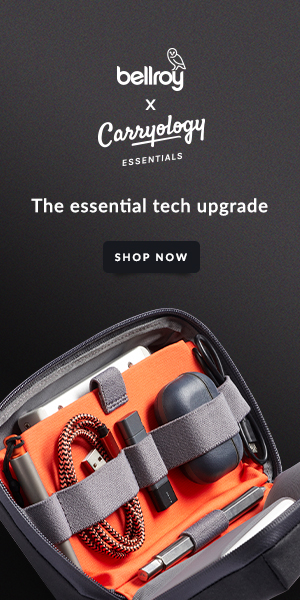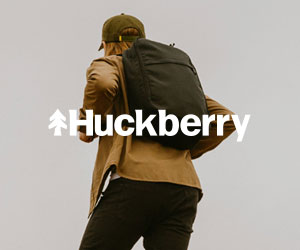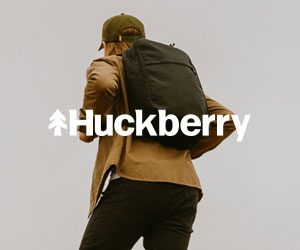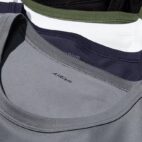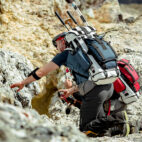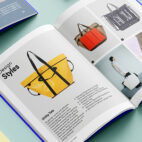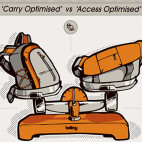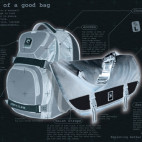How to Build a Brand, According to Founders
You’ve sketched the idea. Solved a problem that’s been begging for a smarter answer. But the leap from clever product to lasting brand? That’s the real crucible. Building a business isn’t a straight line—it’s late nights, false starts, unexpected wins, and the kind of obstacles that can derail even the best intentions. The question is: where do you begin, and what blind spots are you missing along the way?
The smartest answers often come from those who’ve been in the trenches. The founders who’ve wrestled with sourcing headaches, learned how to scale without losing their soul, and built teams that embody more than just a mission statement. That’s why we tapped the minds behind some of the most respected carry brands in the game. Their insights—spanning manufacturing, people, and the principles that drive them—offer a rare, unvarnished look at what it really takes to transform a product into a brand that endures.
Chris Clearman | Matador Equipment
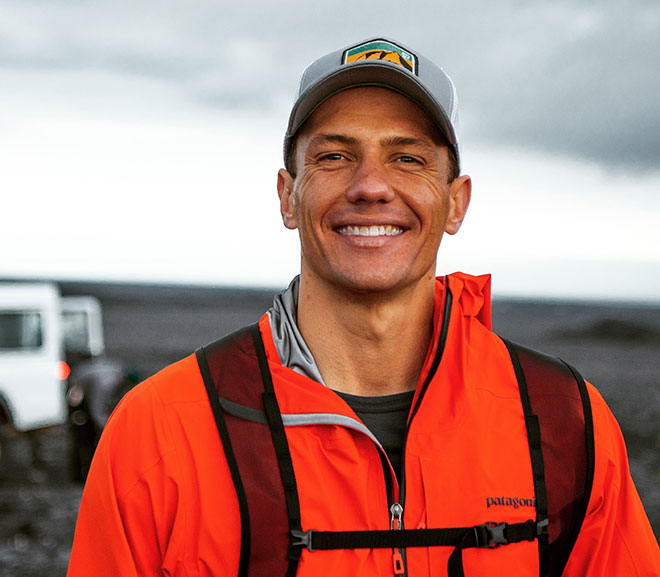
One of the biggest things I can share with someone starting out: Just start, don’t quit, and do the work that counts. None of the steps in this process are overly difficult, but you have to take them all. One step forward, every day, on the tasks that actually matter.
Another important lesson I’ve learned over time is that you can speed up growth by slowing down. Early on, it’s tempting to chase every opportunity and get products to market as fast as possible. In the last few years, I’ve realized that real growth comes from being deliberate. Taking the time to fully refine a product before launch gives it longer legs and a bigger impact. Rushing usually leads to something half-baked that doesn’t live up to its potential. Take the time to see the bigger picture and be deliberate about every step forward.
That same mindset applies to decision-making. Not every “opportunity” is a good one, and most are just distractions dressed up as opportunities. We’ve had to get comfortable saying no, even to things that seem exciting. In the long run, this returns more than it costs. Your energy is finite – keep it focused.
For those who are interested, I go deeper into the gritty details of how to actually launch and grow a brand in my book, Product Entrepreneur: How to Launch your Product Idea — Napkin Sketch to $1 Million in Sales.
Silas Grant | Bedouin Foundry
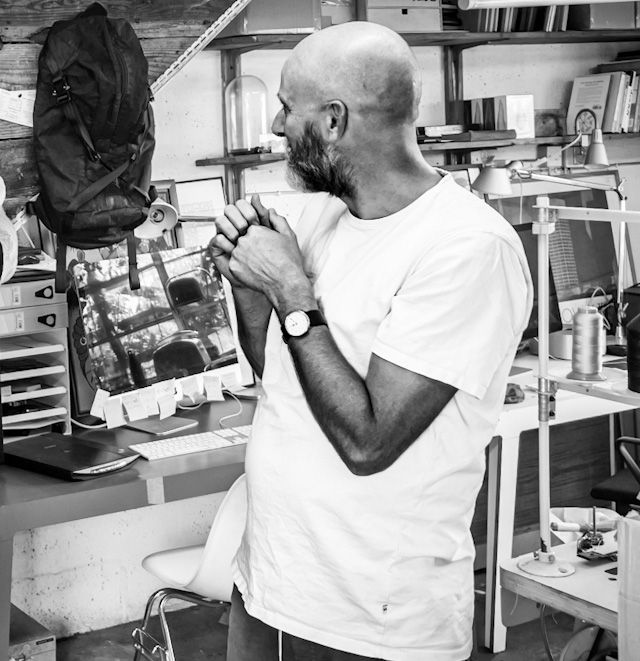
Building the Bedouin Brand
Have a vision, a visual language of your brand. Never try and do exactly what other brands do; otherwise, what is the point of your brand? Be brave and be unique. Sure, not everyone will like it, but they never would anyway. Ideas are cheap; have lots and try lots of things out and hone your offering. Be inspired by the best; look up, not sideways.
Starting out, you need cash. Manufacturing, sampling, and designing do not come cheap, and loans are stressful. Good planning will help, but the early wholesale orders we got in Japan really helped me get Bedouin on its feet as a brand. Our Japanese distributor was really straight up; we got paid 80% before we shipped the goods, albeit at a low margin.
For manufacturing, sure, you can use some nameless factory overseas, but you are just another brand then, so what’s the point of difference? Do we really need more landfill? I worked in commercial design for years and worked with many factories. Always try and build relationships and understand how the factory works, regardless of where the factory is. Visit, hang out, and understand how they work. If you try and push a factory to do stuff they are not good at or uncomfortable with, you are pushing shit uphill. Work with the process and enhance it, tweak it, respect their knowledge. Even if their current product is ugly as hell, they still have expertise in construction and processes that take decades to learn, so can you utilize their processes to make beautiful products?
If you are making it yourself, can you scale up? And be very clear-eyed about the time and effort you are putting into your product, and the value of that. My dad was in the fashion business for many years, making his own product, and to quote him, “making it yourself is a poverty trap.” I can’t say if he is right, but my sewing skills are rather limited anyway, so it was never really an option. If you can set up your own manufacturing, that’s great and it gives you some super advantages but it has to be sustainable and you have to keep it busy. Idle workshops/factories are a terrifying money pit.
The wholesale fashion market is really tough for small brands. There are so many middlemen, showrooms, distributors, PR people, and trade shows, all draining your limited funds. I landed a few big orders at trade shows but I’m not sure the expense was worth it.
Pricing is possibly the most difficult bit; you need to build in some flexibility. In our first year, there was a drought in India and cotton tripled in price from £5 a meter to £15 overnight. Now it sits at about £20. If you are wholesaling (selling to shops), your margins are soooo tight.
When it comes to getting paid, direct to customer (which is what we do now) is great, no issues, but you have to have a certain momentum to sustain that. Wholesale is a good way to get your product out there, but getting paid is hard. The bigger and fancier the store, the harder it is to get your money. A certain luxury store in Paris, owned by one of the largest luxury groups in the world, insisted on sale or return (sale or return sucks, the risk is all on you). They sold everything, and then asked for sale or return again. So I declined their offer. A high-fashion luxury store in Mayfair that was great PR for us, but payment terms are 90 days!? I am lucky to get 30 days from my suppliers, so it’s hard to square the circle there, unless you are sitting on a mountain of cash.
What would I do differently? I would have had a partner to complement my skills (two designers bickering over 2mm tolerances is not the way to go). Have complementary skills. I would have loved to have had a partner who had PR and sales skills, as these are NOT my strengths.
Good luck!
Phil Schade | 1733
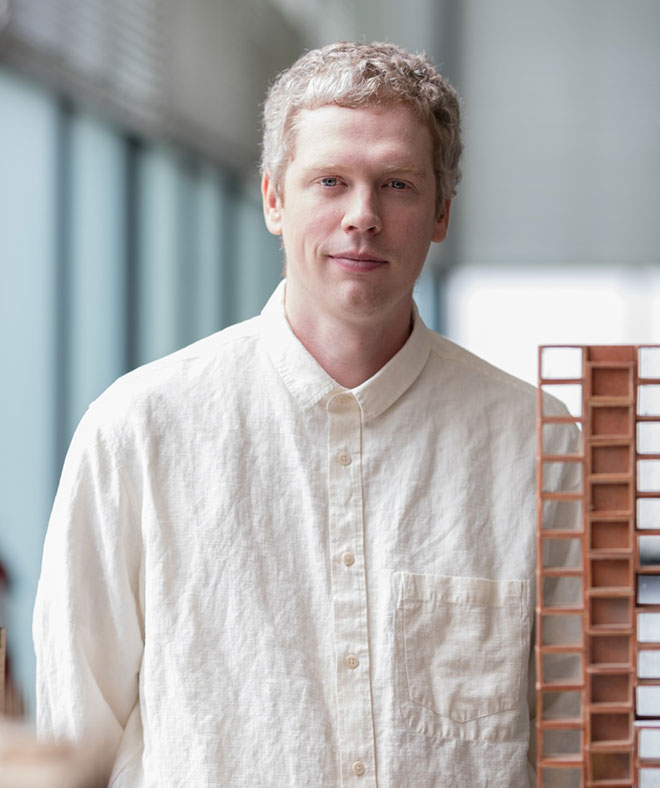
The best part of running my own brand is the real sense of ownership I have over the work and my connection to everything we make. Every product in our line came from my sketchbook and my studio. If something goes wrong I am responsible for it, but when things go right, when we get positive feedback from our customers, I feel so much pride. The only way to maintain that connection to the products is to design and build things that speak to me personally. We don’t chase trends or try to fill market niches. You might find success that way for a little while, but in this industry, no small brand will be sustainable without a vision to ground it. 1733 has been around and growing for eleven years because we make products that excite me and that I want to use. That’s what keeps me inspired to keep evolving the business and expanding who we can reach.
As your brand grows, your responsibilities will have to change. Figuring out how and what to delegate was daunting for me at first as we were scaling up. When those decisions need to be made, knowing yourself is crucial. What will you be able to teach well? What are the tasks you enjoy and don’t want to hand off? What are your weaknesses and where could you use the most help? Finding the right people is also key. Not only will they need to have the necessary skills for their specific role, but there also needs to be a compatibility in personality. Especially early on, you will spend a lot of time with this person and your ability to create a constructive work environment depends on your patience and ability to communicate your expectations clearly. It’s not something you think about much or practice when you are sewing bags on your own in your basement, but it is just as important as patterning a bag.
Finally, building a strong relationship with your manufacturing partners is beyond critical. This is where I see most people in the industry struggle because they have not found a factory that suits them. To have a successful partnership, both the brand and the factory have to align an array of sliders like size, product diversity, material, location, and bandwidth. Startup costs are very high and lead times can be long, so getting these things wrong can be devastating to a new brand. At 1733, we do most of our manufacturing in-house, which grants us a great deal of control and flexibility. When we do work with outside partners, our understanding of the production terminology and physical processes makes the transition between in-house and outsourced labor as smooth as possible. Learn how to make things easy for your partners and they will keep wanting to work with you.
Richard Liu | DSPTCH
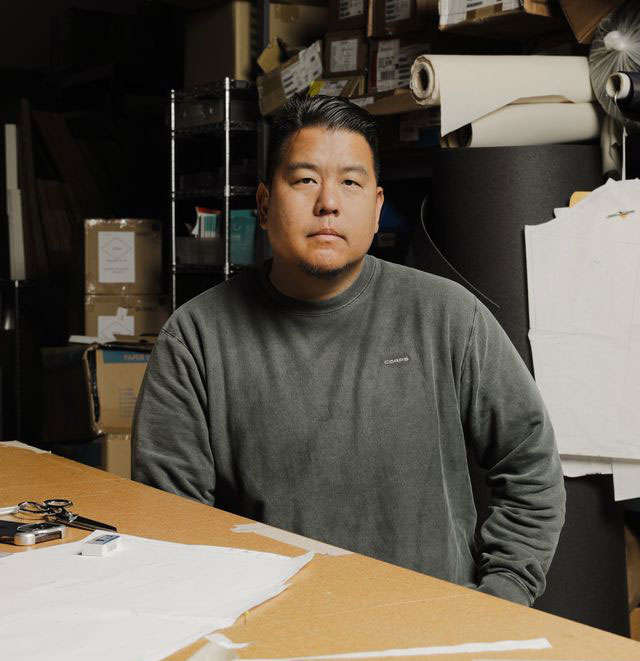
I always tell people that I don’t have a very popular opinion on building a brand. I rely mostly on my decidedly subjective perspective on brands (particularly the ones I admire) as well as my own experience building DSPTCH to form these views. This rarely aligns with what most would consider to be popular or well-known brands in the market. It’s imperative to find your own personal taste for brands through being observant, doing research, and experiencing those brands firsthand. Seeing their journey and how they change and grow is an integral part of understanding their principles, purpose, and, more importantly, where they’re going and why. With that said, here are a few principles based on my personal experiences, knowledge, and opinions:
Principle #1: It starts with authenticity.
The method I employ for building a brand starts with being authentic to yourself and your own interests. The way to determine this is to look at a heat map of how you spend your time and what you’ve gained expertise in organically, without any external motivation. That doesn’t mean anyone can start a brand on any topic they know a lot about, but I believe the best brands start with someone—or a group of people—who are more passionate about the subject than its potential as a business. Knowledge and experience lead to undiscovered insights, which is what all great businesses start with.
Principle #2: Define your non-negotiables.
It’s easy to fall into the mindset that if everyone likes something, it must be good. Finding your internal voice and being able to defend your own likes and dislikes takes time, especially if you plan to stand by that opinion even when you’re the only one who holds it. To me, this is a critical part of building a brand. Developing the pillars of DSPTCH is something I constantly refer back to as I go about having to make hundreds of good decisions every week. Some are borrowed from other companies, some are from friends; they really can come from anywhere. This process is important because the rollercoaster of entrepreneurship will test them quickly. These non-negotiables will continue to evolve over time, so also don’t feel like they all need to be established on day one.
Principle #3: Stay the course.
This is by far the hardest one. The only consistent trait I’ve found among the brands I’ve tried to model my own after is that they’ve stood the test of time. That’s no small feat. Every great brand has endured multiple tests. Consumer preferences inevitably shift, and the very attributes that once defined your strength can later be framed as reasons you’re stuck in the past. This principle also reveals a lot about how I view brands, because most of the ones I admire are those I’ve followed for years, even decades — a somewhat contrarian stance compared to how most consumers approach brands today.
This is my best attempt to put together thoughts and ideas in a way that’s easy to digest while also giving you a chance to learn a little more about me. Of course, I always recommend doing your own research and fact-finding. Read from a variety of sources (not just social media), consider different opinions, and decide which parts resonate with you and which don’t.
Campbell Junor | Alchemy Equipment
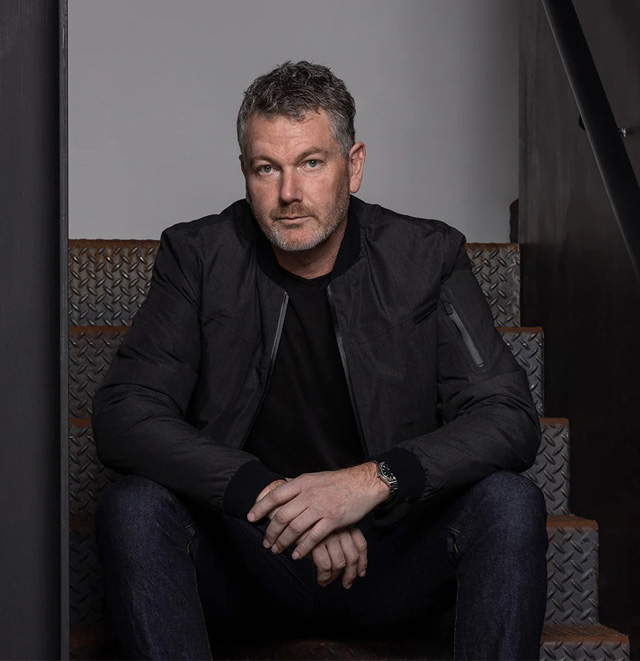
I had about 18 years of working as head of design, creative director, and co-owner for a few of the biggest players in the outdoor game in my corner of the world before deciding to build a brand and a business from scratch. And for me, I’ve found this useful…
Lesson #1: Walk around in a business or two and see different ways of doing things.
I worked as the sole designer and product development manager for Kathmandu in the early ’90s when we were a disruptor in the industry. Our competitors were only focusing on the core of the outdoor market sector, but we explored ways to gain a broader customer base and introduce the benefits of Polartec and Gore-Tex to more than hardcore outdoor enthusiasts. We did this through product, price, and personality. Eye contact and smiles when everyone else was extreme and hardcore.
We operated without ego—unafraid to try something that meant losing “top of the mountain” customers to gain everyone still at basecamp. We worked on being relatable, eschewing the popular “gear of the year” focus that our counterparts all fought over. It may not have been as “sexy,” but a mountain is bigger and more stable at the base than at the pointy end.
My next move was to work in a business that operated very differently.
Lesson #2: You need science as well as art.
While Kathmandu seemed almost an improv act in how we went about business (very intuitively managed, with no reporting tools), when I moved to Mountain Designs—recently acquired by a venture capitalist and led by an ex-Nike accountant-trained CEO—I saw a very different approach.
There, structure was sharper: clearer delineation between roles, a less consultative franchise business model, and products built to hit carefully mapped price-point tiers rather than “cool stuff” driving my previous range planning. It was a very useful time, because it showed me a different way to build a business. Brand identity was built upon aspirational achievements, athlete endorsements, and events. But as a business, we focused heavily on metrics like gross profit per square meter of retail space, stock turn per year, and, compared with my previous role, took a very conservative approach to product and market diversification. It was perhaps less fun, but full of learnings. Aim for art, measure with science.
Exiting this role, I both started up a furniture brand (NOOD) and acquired a semi-deceased heritage outdoor brand (Fairydown), and soon after purchased Macpac. Macpac became the focus, but once again the brand already existed—I just became the new custodian.
Lesson #3: Find that balance.
Brand management here during my ownership struck a balance between assuring previous customers that the products they loved were unchanged while still adding the product extensions needed to complete the transition from wholesale brand to retail brand. (In simple terms, a wholesale brand should identify opportunities that exist on the shelf of their vendors; a retail brand should aspire to have an offer for everyone who enters the store.)
The difficulty became one of brand plasticity: how does one brand claim to be the pinnacle for mountaineers’ packs and 4-season tents, but also where grandma buys a nice warm coat, and where a six-year-old gets thermals?
Lesson #4: Make sure you’re all singing the same song.
Add to that the complexity of having partners with different ideas on which of these markets mattered most, and a lack of alignment on where the brand should be in five years, and I decided to exit what had become an unpleasant environment for me. (To expand: if you think of a brand as a forest, then you must recognize that if you want to harvest, you must continue to plant seeds. Is everyone with a voice singing the same song?)
All of the above experiences helped me immensely when deciding to start building my own brand, Alchemy Equipment, from the ground up. But really, my advice (in addition to the last lines of the three paragraphs above) is the following, taken from readings over the years…
And lastly, before you proceed on a brand idea, you MUST be able to answer three things in a pithy, interesting way:
- – Who are you?
- – What do you do?
- – Why does that matter?
If you can do this and garner an enthusiastic response, then you may be onto something. From here, I feel a worthy objective in creating your brand would be to “find something only I can say,” and to use as a touchstone: “Will my tribe still recognize my voice/handwriting if I hide the label?” Homogeneity in oversupplied markets = death. (Read Purple Cow by Seth Godin if you haven’t.)
Your brand isn’t what you tell me it is—it’s what one of your customers tells me it is. Consistent brand experiences build loyalty, and every touchpoint of the customer journey should strengthen the connection and reaffirm understanding.
Oh, and be brave, agile, and not too proud.
Feature image courtesy of 1733.





 Carry Awards
Carry Awards Insights
Insights Liking
Liking Projects
Projects Interviews
Interviews


